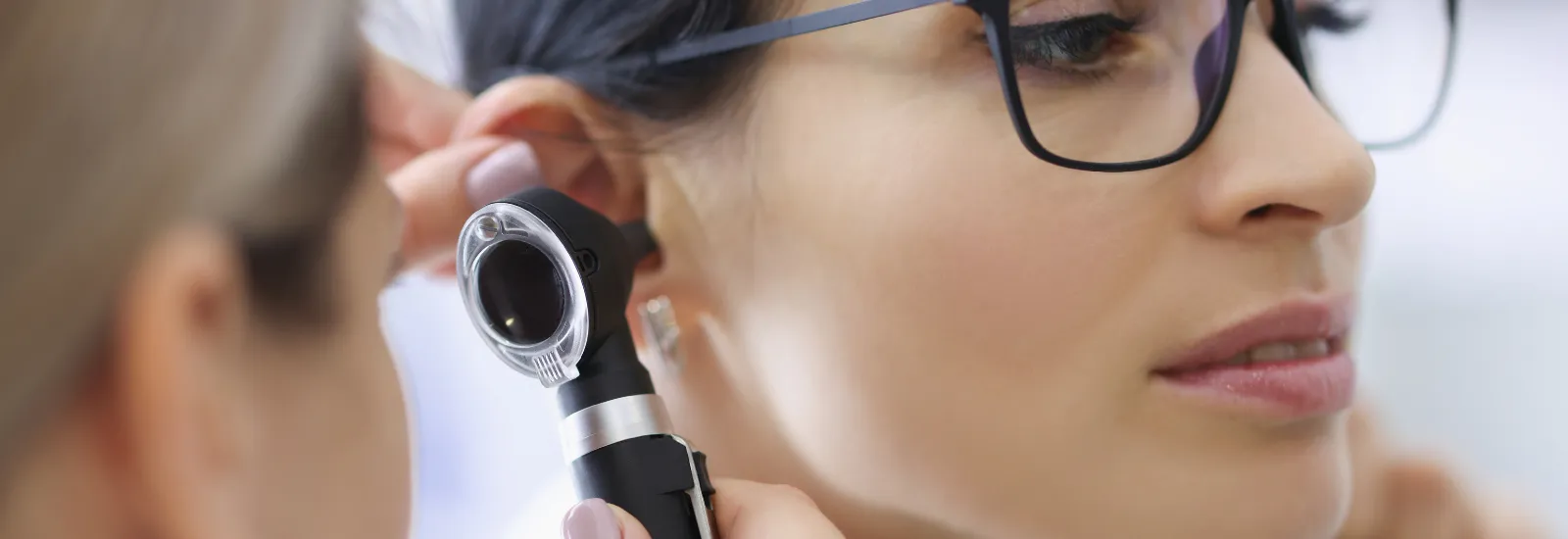
Answers to 5 common questions about tympanometry test
Most people take their hearing for granted. It's easy to overlook the complex workings of the ears when you don't have trouble hearing. Still, hearing screenings and tests are an essential part of setting your child up for success. One such test is called tympanometry.
Infants receive a hearing test shortly after birth. Elementary-aged children also receive screenings during well-check visits with their primary care provider and in school. For most kids, this is enough. However, when children have frequent ear infections or show signs of hearing loss, an additional tests, such as tympanometry, might be necessary.
What does tympanometry measure?
The ear is made up of three sections called the outer ear, middle ear, and inner ear. Each section plays a different role in hearing.
"Tympanometry lets us take a quick picture to see how sound is moving through that middle ear and how the eardrum moves," said Dr. Kyle Langfitt, AuD, an audiologist at Reid ENT. "When I say, 'middle ear,' I'm referring to the eardrum, the small bones behind the eardrum, and the muscles attached to those bones."
Usually, the amount of air pressure behind the eardrum and outside of the eardrum are equal. If you drive in the mountains or fly on an airplane, you may have experienced uneven pressure (popping) in your middle ears that eventually goes away. Allergies, a cold, or the flu may also cause temporary pressure changes in the ear.
But long-term, uneven pressure in the middle ear can cause damage and negatively affect middle ear function, potentially leading to hearing loss. Uneven pressure can result from a build-up of fluid in the middle ear, which dampens sound.
Extra fluid may also cause discomfort, pain, and infection, a common problem in childhood because the tube that lets fluid drain out is shorter and positioned differently than it is in an adult's ear.
Who
should have tympanometry completed?
Your child's primary care provider will likely recommend assessment with tympanometry if your child shows signs of possible hearing loss, which include:
- Constantly turning up the volume on the TV or music player
- Delayed speech
- Difficulty understanding what others are saying
- Not startled by loud tones
- Sounds heard within the ear (popping/crackling)
- Trouble paying attention when listening
Tympanometry is just one type of test used during an exam. Based on your child's age and specific symptoms, their provider may also order additional tests.
What
happens during a tympanometry test?
Dr. Langfitt said a tympanometry test involves putting a small, rubber tip inside the ear, which applies a bit of pressure and emits a sound to understand how sound moves through the middle ear. "Tympanometry is very quick, very simple, and painless," Langfitt said. "It just takes about a second. We get the results right then and there, and they're pretty easy to interpret."
A
machine records the test results on a special graph called a tympanogram.
Because tympanometry gives only one picture in time, your child's provider may order multiple tests a few weeks or months apart. This can create a better view of what is happening over time and may help rule out certain conditions with similar signs or symptoms.
What do the results show?
Tympanometry can show there is fluid behind the eardrum, which may be the beginnings of an ear infection.
This test can also show if there is a hole or tear in the eardrum, known as a perforated tympanic membrane. However, the test will not show how large the hole is .
What
happens after the test?
If your child's tympanometry test result shows abnormal middle ear function, their provider may order more testing or refer your child to an ear, nose, throat specialist or an audiologist. An audiologist, such as Dr. Langfitt, diagnoses and treats hearing and balance disorders.
Several different treatments may be recommended, depending on what the exams and testing show.
Treatments
for ear problems may include:
- Medication
- Surgery
- Speech therapy
- Hearing aids
- Cochlear implants
- Assistive technology
To schedule a hearing test, request an appointment at Reid Hearing Center.

